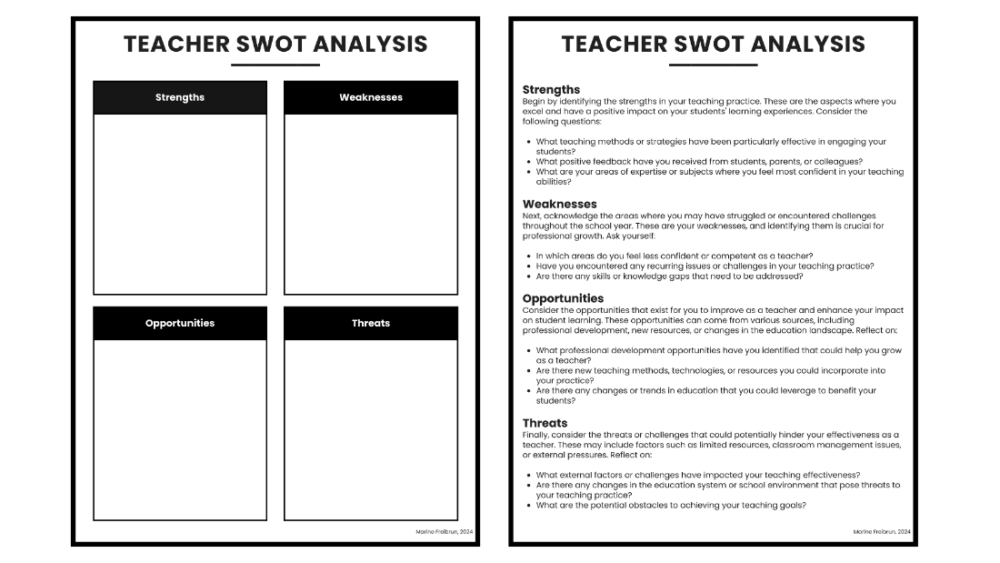The school year is winding down, and as educators, we’re naturally reflecting on the whirlwind of lessons, tests, and triumphs (and maybe a few tears) of the past months. But before you pack away your lesson plans and head for summer break, take some time for a powerful self-assessment tool: the SWOT analysis.
SWOT stands for Strengths, Weaknesses, Opportunities, and Threats. It’s a framework used in business, but it translates beautifully to the world of education.
Here’s how to use it to evaluate your teaching effectiveness and plan for an even stronger year ahead:
Strengths: Celebrate Your Wins!
Start by acknowledging what you do well. Are you a master of differentiated instruction? Do you create engaging activities that keep your students on their toes? Perhaps you have a talent for building strong relationships with parents or fostering a collaborative classroom environment. List these strengths – they’re the foundation for your success!
Weaknesses: Embrace Areas for Growth
This might feel uncomfortable, but identifying areas for improvement is crucial for growth. Be honest with yourself. Do you struggle with classroom management? Is there a particular teaching strategy you haven’t quite mastered? Maybe you find it challenging to incorporate technology into your lessons. Naming these weaknesses empowers you to address them next year.
Opportunities: Seize the Moment
Look beyond your classroom walls. Are there professional development workshops you’d like to attend? Could you collaborate with a colleague on a cross-curricular project? Maybe there’s a new technology you’d love to learn. Identifying these opportunities allows you to stay fresh and keep pace with the ever-evolving world of education.
Threats: Anticipate Challenges
Think about external factors that might hinder your teaching. Is there a looming curriculum change you need to prepare for? Are budget cuts making it difficult to access resources? Perhaps standardized testing creates unnecessary pressure. By acknowledging these threats, you can develop strategies to mitigate their impact.
From Analysis to Action
Once you’ve completed your SWOT analysis, use it to create an action plan for the upcoming year.
Here are some tips:
- Leverage your strengths. How can you use your existing skills to benefit your students even more?
- Address your weaknesses. What resources or training can help you improve in these areas?
- Pursue your opportunities. Can you schedule time with your principal to discuss professional development options?
- Develop strategies to address threats. How can you adapt your teaching style to navigate curriculum changes or limited resources?
Remember, a SWOT analysis is a tool for self-improvement, not self-criticism. By reflecting on your teaching practice, you’ll be well on your way to an even more successful and rewarding school year ahead. Now, go forth and conquer that summer break – you deserve it!





